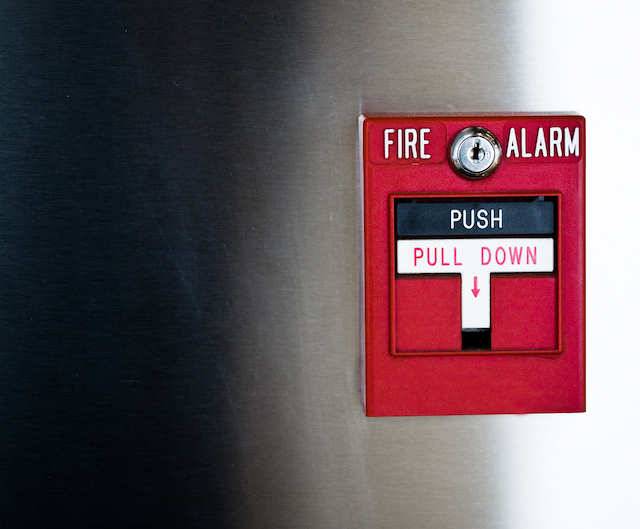
Understanding fire alarms and how they operate can help you determine the best vendor and system for your business’s needs.
Believe it or not, business fires cause a significant amount of damage every year. Fire safety is something that all companies should take seriously, as it can be the difference between your life and death. Understanding fire alarms and how they operate can help you determine the best vendor and system for your business’s needs. Here you will learn about the different types of system components and types of fire alarms, as well as how they work as a piece of security.
How Do They Work?
Today’s fire alarm systems are brilliant. They can detect an issue, signal an alarm to alert people in the building and send information over to the monitoring company so that emergency responders can send out help. Typically, the monitoring company has protocol what it should be verifying as a threat. They can do this by calling someone in the area or even using camera access to the space that’s in danger. Keep this in mind though, your business can be fined for false alarms.
Components of a Fire Alarm System
There are multiple components to a fire alarm system, which include:
- Control panel: this monitors your inputs and outputs and sends out information.
- Power supplies: both primary and secondary (backup) are needed
- Initiating devices: these are components that indicate the actual fire, there are two types – manual and automatic
- Notification applications: these alert everyone to danger. Ex: lights, sirens, speakers
- Building safety interfaces: these are things that help people leave the building. Ex: exit lighting, ventilation systems that redirect smoke.
Those are the essentials needed for a proper fire alarm system. If you have these components, everyone’s safety will be ensured.
Types of Alarms
There are two types of reliable alarms that you can install for your business. Both utilize initiating devices such as smoke detectors to your control panel. However, they differ in how they are linked and their overall operation. Here’s how:
- Conventional alarms: These alarms link initiating devices to the control panel on its own wire and can be set up in zones. While an initiating device has been activated, the system can then identify the zone of that device. If you’re a smaller company, you may only need to have one area covered. These types of alarms are cheap and might make the most sense for you.
- Addressable alarms: The most significant difference between this kind of system is that it’s digital. Each device has its own address on the system, allowing you to locate the exact area of the triggered device and send help directly to the location of the fire. These types of systems make more sense for larger buildings and businesses. So, if you’ve got more of a budget, go for this one.
Fire Protection Services from Fireline
Whether you need smoke detectors, fire extinguishers, or an automatic sprinkler system installed at your commercial property, Fireline has you covered. We have been protecting people and property from fire damage since 1947—and our experience shows in our excellent work! We are known for our superb customer service, our expertise, and our reliability. For more information on how we can help your residential or commercial property, visit us online or give us a call at (800) 553-3405. We are located in Baltimore, MD, with a second office in Leesburg, VA. For more fire safety tips, be sure to follow us on Facebook, Twitter, and LinkedIn.
